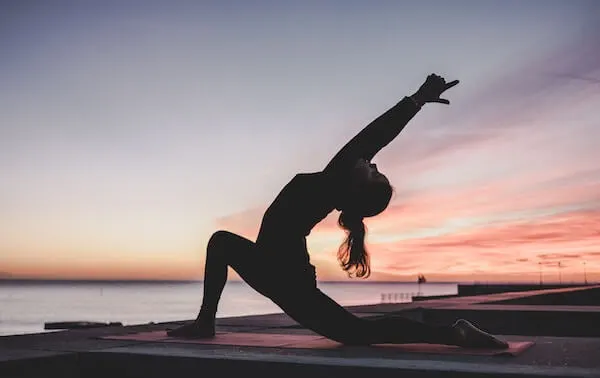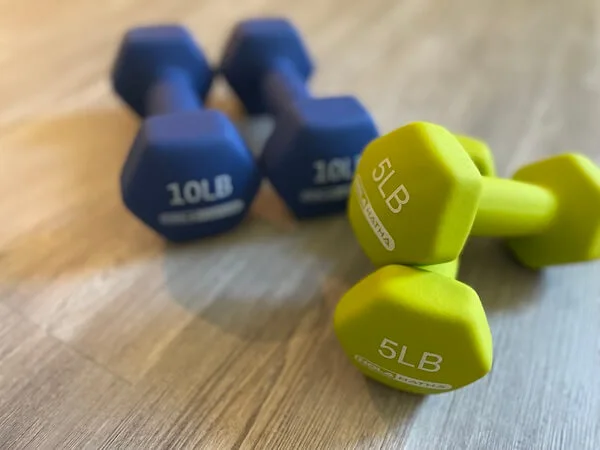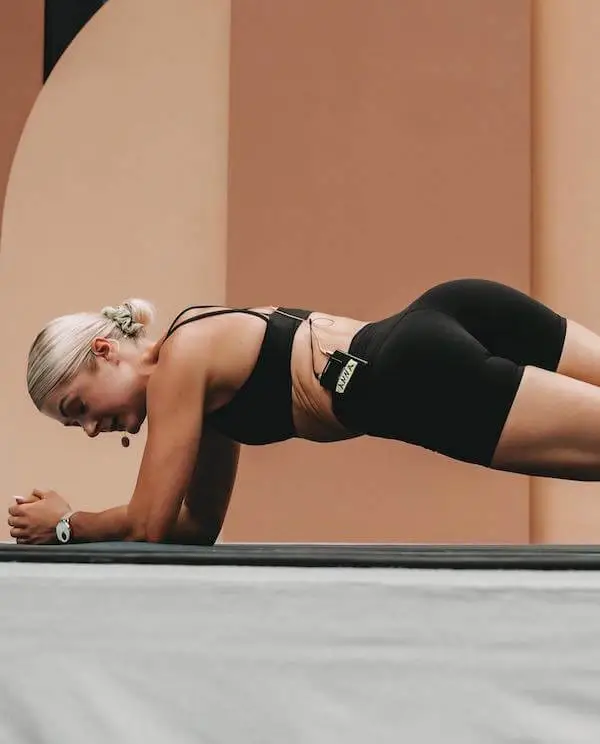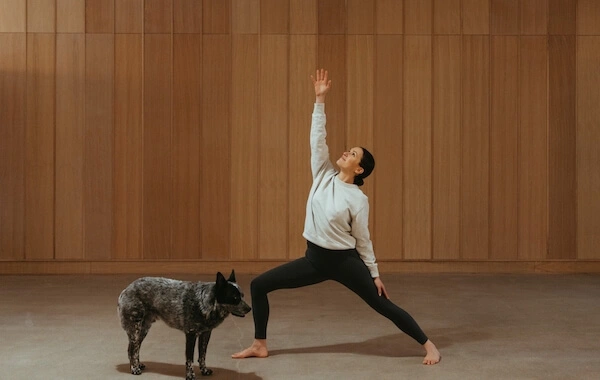
Ah, that post-Thanksgiving hangover. And no, not the alcohol one, although some of you may be experiencing that too.
I mean the food hangover; the bloating, heaviness, and lethargy.
I get it, I’m right there with you.
On a typical day, I don’t eat that much — my meals are pretty well-proportioned with healthy snacks in between. But when Thanksgiving rolls around… well, I like to say it’s game over.
Something that you might also notice that comes with the lethargy of post-Thanksgiving meals is your lack of mental clarity and focus. And let me tell you, this makes it so much harder to get back into work mode.
What we eat has such a profound impact on our mental health and brain function. Have you ever driven halfway down your street and then suddenly remembered you had left something at home? Or struggle to recall names, dates, and even places that you recently went to? If so, then you might be experiencing brain fog.
Coupled with large holiday meals like Thanksgiving — it can certainly have a lasting impact on how your brain functions for the coming days and weeks
But there is one simple solution that’ll get you back on track quickly.
You guessed it — exercise!
What’s great is that this solution comes with a myriad of options, so you can choose what exercises work best for you.
Research has shown that regular, physical exercise can improve memory, attention, and other cognitive functions. So not only is it going to help with feeling better after holiday meals, but it’s also a great addition to your daily routine if you haven’t included it already.
Exercise increases blood flow to the brain, which can improve cognitive function by delivering oxygen and nutrients to brain cells. And don’t even get me started on the long-term health benefits of daily exercise. Consistent physical activity is a great way to reduce inflammation in the brain, which can help protect against cognitive decline.
Look, there’s this myth that you have to engage in intense workouts for it to count as exercise, and that’s simply not true!
Some days, I go for a 20-minute walk and that’s my exercise. On other days, I’ll do a 25-minute yoga session and that’s my exercise. When you think of exercise or working out, it doesn’t have to look like someone pumping iron at the gym or running 10 miles. It can look like whatever you want it to look like as long as you’re getting your heart pumping!
If you’re a beginner looking to add some exercises to your daily routine, we’ve got you covered. Here are 6 simple exercises that will boost your brainpower, improve your long-term health, and give you all the feel good vibes!
Table of Contents
1. Aerobic Exercises
This is similar to cardio. Simply put, aerobic exercises, or cardio workouts, get your heart pumping. During aerobic exercise, blood pumps quickly throughout your body while your lungs take in more oxygen. That’s why you feel like you’re huffing and puffing; it’s a good thing!
Running, swimming, and biking are all forms of aerobic exercises that pump blood to the heart and brain. These types of exercises have proven to affect brain plasticity, influence cognition, and improve overall wellbeing.
Remember when I said I don’t work out for that long? It’s true. On my cardio days, I either go for a 20-30-minute run or do a 30-minute HIIT workout. If I don’t have time, I’ll opt for a 20-minute HIIT workout (more in the HIIT section below).
If you have access to a pool, I highly recommend incorporating swimming into your workout routine. Swimming laps has proven to not only improve physical health and prevent neck, back, and shoulder pain, but it’s also beneficial for your mental health!
2. Resistance Training

This kind of training involves building strength so that your muscles can support the rest of your body and prevent injuries. But resistance training is also essential to brain health.
Using weights or resistance bands to build muscles can help improve cognitive function by increasing levels of brain-derived neurotrophic factor (BDNF), a protein that promotes the growth and survival of brain cells. Strength training is especially important for older adults as the process of aging can significantly impact the loss of brain cells.
I know what you’re thinking. Your brain is probably associating strength training with weight lifting and bodybuilders. But not necessarily!
Again, try to shift your mindset when thinking about strength training.
Strength training doesn’t have to be you hitting the gym and benching 100 lbs.
You can use your body weight. You can get small-sized dumbbells at home (that’s what I use). You can use resistance bands. The whole point is to build strength in your muscles which will support your entire body as it goes through the aging process while improving your brain health overall.

3. Interval Training
This one’s my favorite. An interval training workout is when you have periods of high-intensity cardio exercises that feel like bursts combined with periods of recovery and less intense exercises.
Earlier I mentioned HIIT workouts. And you might’ve probably heard of HIIT before, which stands for High-Intensity Interval Training.
HIIT workouts have proven to be one of the best workouts to build speed and endurance. This could also look different depending on the type of HIIT workout you are engaging in.
Typically, a HIIT workout would include 45-60 seconds when you are “on” which means you’re doing an intense exercise whether it’s sprinting, jumping jacks, or box jumps. Then, there would be a rest period of 30 seconds where you could be resting until the next set or you are doing a low-intensity exercise.
If applied to running, interval training would look like sprinting for 2 minutes and jogging for 1 minute and then picking up the pace again for the next 2-minute sprint.
For me, YouTube is my go-to gym for HIIT workouts. Depending on how much time I have, I would turn on a 15-minute, 30-minute, or 45-minute HIIT workout and just follow along with the coach. After doing this for many years, I definitely have favorites.
If you’re curious, I LOVE growingannanas on YouTube. Here are some of my favorite videos and honestly, I use these every week now, especially those quick workouts!

- 15 Min Sweaty HIIT Workout
- 15 Min Quick Sweaty HIIT
- 20 Min Sweaty Cardio HIIT
- 30 Min Killer HIIT
- 40 Min Advance Full Body HIIT (if you’re looking for a challenge!)
4. Yoga
Yoga has been around for centuries but has only recently become more mainstream in the Western world. Well, now that more people have discovered the all-around benefits of yoga, it’s no wonder everyone wants in!
Yoga combines physical movement with mindfulness and meditation. It’s a holistic approach to wellbeing that many people have started to adopt around the world.
Aside from the physical benefits of increased flexibility, strength, and balance, yoga can also help reduce stress, anxiety, and depression by decreasing inflammation in the brain, which has been linked to a number of cognitive disorders such as Alzheimer’s disease and dementia. This practice not only improves your physical health, especially for older adults but also benefits your mental health and cognitive function.
Studies have shown that regular yoga practice can lead to improvements in memory, attention, and executive function. One study found that practicing yoga for 12 weeks improved symptoms of depression and anxiety in people with major depressive disorder. Another study found that practicing yoga for just one hour reduced levels of the stress hormone cortisol.
You might find that even just 20 minutes of yoga a day can improve your cognitive performance and increase brain connectivity. Start observing how you feel after each yoga session and notice whether your stress or anxiety levels have minimized. Also take notice of your attention and focus; over time you’ll start to see these benefits play out in your work.
If you’re able to, it’s always best to go to a yoga studio. The ambiance of a yoga studio and expert instructor contributes greatly to the overall session. However, if you’re like me and don’t have a lot of time or money, you can always use YouTube!
If you’re wondering where to start, I absolutely LOVE Yoga with Adriene. Not only are her yoga workouts beneficial for the body, but she also has this calming aura in her voice that makes every workout soothing and peaceful.

Another one of my favorites is Mady Morrison. She has great yoga videos but I especially love her stretching videos with music only. I usually watch her stretching videos after cardio and resistance workouts. In fact, I do her stretches every day, and it just makes my body feel so good!
5. Cycling
Whether you’re cycling indoors or outdoors, cycling is one of the best exercises for your brain health!
It’s one of those activities that can really get your heart pumping, legs moving, and brain buzzing. That’s right, folks, hopping on a bike and pedaling away can have some serious, positive effects on your grey matter.
Research has shown that cycling can improve brain health by increasing the number of new brain cells and brain plasticity, which boosts memory and cognitive function while improving the areas that make your brain communicate better with each other.
Cycling is a great way to get your heart pumping, which increases blood flow to the brain and delivers vital nutrients and oxygen to brain cells. Additionally, cycling is a low-impact form of exercise, meaning it’s easy on the joints and muscles and reduces the risk of injury.
One important thing to note: make sure you have a comfortable and properly fitted bike. A bike that’s too big or small can lead to discomfort and poor form, which can actually do more harm than good.
6. Taking a Walk

Walking is a simple and accessible form of exercise for everyone. Not only that, it has significant benefits for brain health, especially in older adults.
Studies have shown that taking a brisk, 15-20 minute walk outside can lead to better cognitive function and memory as well as preventing dementia.
Like other physical activities, walking improves blood circulation and increases blood flow to the brain, which stimulates the release of endorphins (those “feel-good” chemicals)!
Yes, you read that right.
You don’t have to do high-intensity or strenuous workouts to feel good. A simple walk outside, especially on a nice, sunny day will instantly boost your mood and brain health.
Final Thoughts
Although this article is extremely relevant right now for your post-holiday workout, you should consider adding these routines to your daily regimen!
It’s important to note that the days when you really don’t feel like working out are the days you need it most. Exercising when you don’t feel like it helps build mental strength and boosts positive endorphins, which are hormones that relieve pain and stress.
When I’m not feeling too well, especially on my low mental health days, I push myself to do some form of exercise and that’s usually walking, yoga, or stretching. These are soothing and meditative forms of exercise that are good for your body and mind.
Now that you know why it’s crucial to add physical exercise to your daily routine, there’s no excuse to not get started. Whether you prefer aerobic exercise, strength training, yoga, or any of the other types of exercise listed above, regular physical activity can help improve memory, attention, and other cognitive functions.
